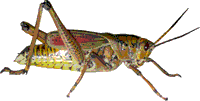Entomology Collections, General

Entomology Papers from Other Sources
Document Type
Article
Date of this Version
7-1988
Abstract
The microhabitat distribution and activities of peridomestic cockroaches were examined (August to October 1985) at three sites in northcentral Florida to assess concentration, immobility, and accessibility of populations. Smokybrown cockroaches, Periplaneta fuliginosa (Serville), and Eurycotis floridana (Walker) accounted for at least 67% of cumulative recaptures at each site. Populations were strongly concentrated in palms, trees with treeholes, woodpiles, and (to a lesser extent) various mulches; salient differences were observed for each species, indicating a partitioning of resources. Recapture rates were high, averaging >62% over all three sites for females of both species; rates were significantly lower for males (P < 0.05), but still averaged >40%. Mean distances traveled were generally less than 2 m. However, frequency distributions of distances moved per successive recapture were strongly right-skewed, invalidating the mean as an estimate of typical mobility; more than 72% of 690 recaptures of all stages of both species involved net movement of less than 1 m (median = 0). Daily activity was strongly correlated negatively with change in precipitation and positively with maximal temperatures, but it was best predicted by low temperatures during periods of hot weather. Minimal temperature threshold of activity was about l0°C. The data indicate that distributions and activity patterns are predictable and suggest that a suppression strategy based on intercepting populations with baited traps or toxic baits would affect control.


Comments
Published in ANNALS OF THE ENTOMOLOGICAL SOCIETY OF AMERICA Vol. 81, no. 4.